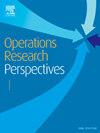In the last decade, increasing costs and organizational concerns regarding the funding and allocation of financial resources have led to significant attention being given to financial flow and its effects on planning decisions throughout supply chain networks. This study aims to develop a simulation-optimization model to integrate the financial and physical flows in a supply chain planning problem under economic uncertainty. The simulation-optimization model includes a mixed-integer linear programming model and a simulation-based optimization model that are connected through an iterative process. The economic value added (EVA) index is used to measure the financial performance of the supply chain. This study extends the literature on two research domains namely supply chain planning and finance and simulation-optimization modelling for supply chain management. The proposed model applies a scenario approach to cope with economic uncertainty in the supply chain. To demonstrate the efficiency of the proposed model, the performance of the proposed model in solving a test problem from the recent literature is compared with the performance of a conventional simulation-based optimization and mixed-integer linear programming approaches. The results of the study show a minimum of 6% improvement in the EVA obtained from the proposed simulation-optimization model compared to the EVA obtained from the simulation-based optimization model in all the studied scenarios. Moreover, the standard deviation of the EVA obtained from the proposed simulation-optimization model is at least 69% lower than the EVA obtained from the mixed integer programming model in all the studied scenarios. This shows that the proposed simulation-optimisation approach is more robust to economic uncertainty than the mixed-integer linear programming approach.


